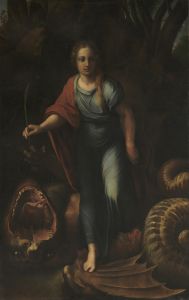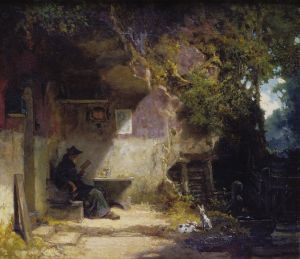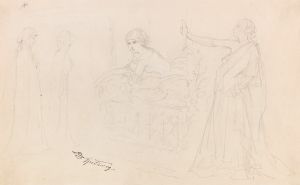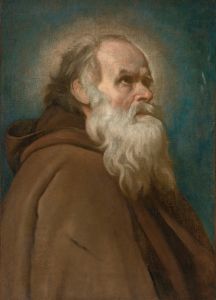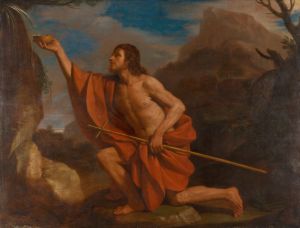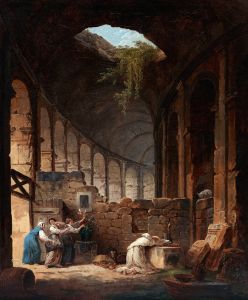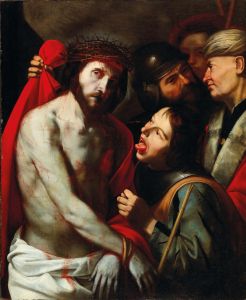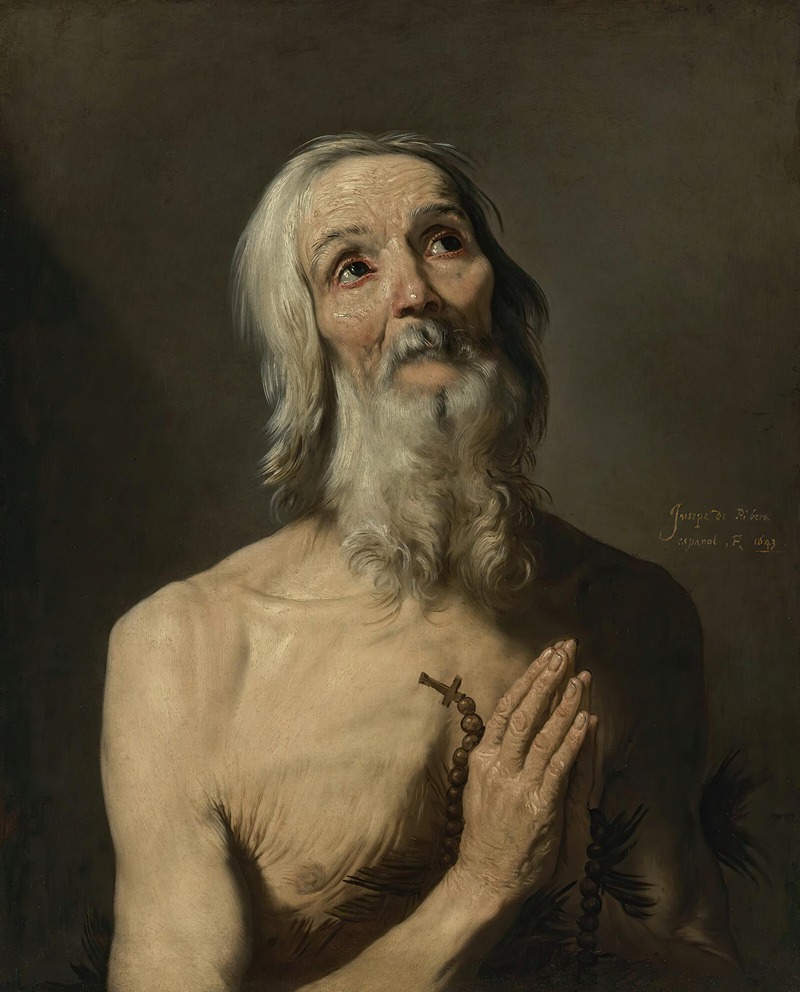
Saint Onophrius
A hand-painted replica of Jusepe de Ribera’s masterpiece Saint Onophrius, meticulously crafted by professional artists to capture the true essence of the original. Each piece is created with museum-quality canvas and rare mineral pigments, carefully painted by experienced artists with delicate brushstrokes and rich, layered colors to perfectly recreate the texture of the original artwork. Unlike machine-printed reproductions, this hand-painted version brings the painting to life, infused with the artist’s emotions and skill in every stroke. Whether for personal collection or home decoration, it instantly elevates the artistic atmosphere of any space.
Jusepe de Ribera, a prominent Spanish painter of the Baroque period, is renowned for his intense and realistic depictions of religious subjects. One of his notable works is "Saint Onophrius," a painting that exemplifies Ribera's mastery in portraying human emotion and spiritual intensity. Ribera, who spent much of his career in Naples, was heavily influenced by the tenebrism of Caravaggio, which is evident in the dramatic use of light and shadow in his works.
"Saint Onophrius" depicts the Christian hermit saint who lived in the Egyptian desert. The painting captures the saint in a moment of deep contemplation and ascetic devotion. Ribera's portrayal is marked by a striking realism, emphasizing the physical austerity and spiritual dedication of the saint. The saint is often shown with a long beard and wearing only a loincloth, symbolizing his renunciation of worldly possessions and comforts. This visual representation aligns with the traditional iconography associated with Saint Onophrius, who is venerated for his life of solitude and penance.
Ribera's technique in "Saint Onophrius" highlights his skillful use of chiaroscuro, a method that contrasts light and dark to achieve a sense of volume and three-dimensionality. The saint's figure is illuminated against a dark background, drawing the viewer's focus to his expressive face and emaciated body. This use of light not only enhances the physical realism of the figure but also serves to underscore the spiritual enlightenment and inner strength of the saint.
The painting reflects Ribera's interest in the human condition and the extremes of human experience. His works often explore themes of suffering, redemption, and the divine, and "Saint Onophrius" is no exception. The detailed rendering of the saint's weathered skin and gaunt features conveys a life of hardship and spiritual rigor, inviting the viewer to contemplate the nature of faith and sacrifice.
Ribera's "Saint Onophrius" is also notable for its emotional depth. The saint's expression is one of serene introspection, suggesting a profound connection with the divine. This emotional resonance is a hallmark of Ribera's work, which often seeks to evoke a visceral response from the viewer. The painting's composition and execution demonstrate Ribera's ability to convey complex spiritual themes through the depiction of the human form.
Throughout his career, Ribera was celebrated for his ability to capture the essence of his subjects with both technical precision and emotional insight. "Saint Onophrius" stands as a testament to his artistic vision and his contribution to the Baroque movement. The painting remains an important work within Ribera's oeuvre, reflecting his deep engagement with religious themes and his mastery of the Baroque style.
In summary, Jusepe de Ribera's "Saint Onophrius" is a powerful representation of the saint's ascetic life and spiritual devotion. Through his use of chiaroscuro and realistic detail, Ribera creates a compelling image that invites reflection on themes of faith, sacrifice, and the human condition. The painting exemplifies Ribera's skill as a painter and his ability to convey profound spiritual and emotional truths through his art.





